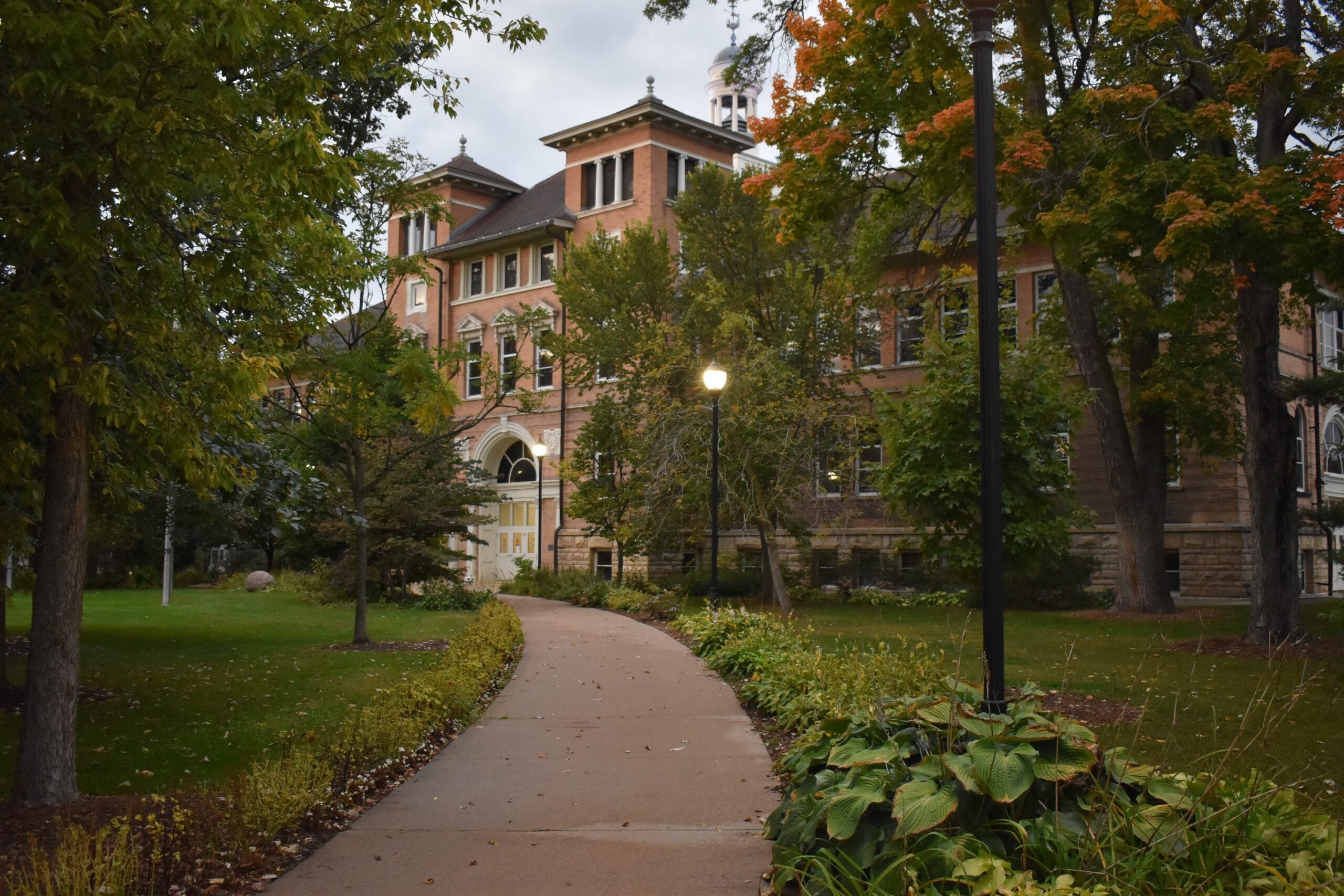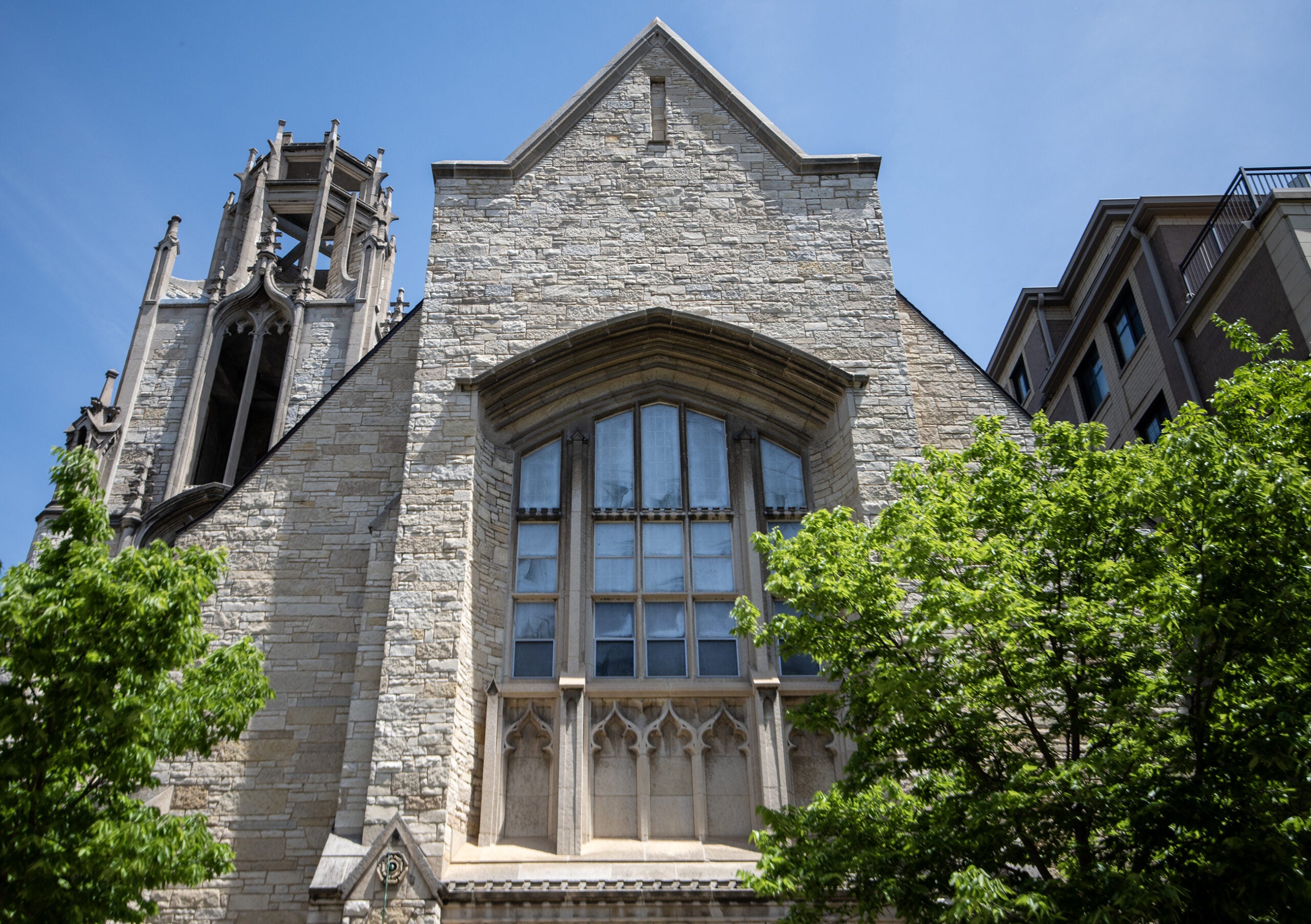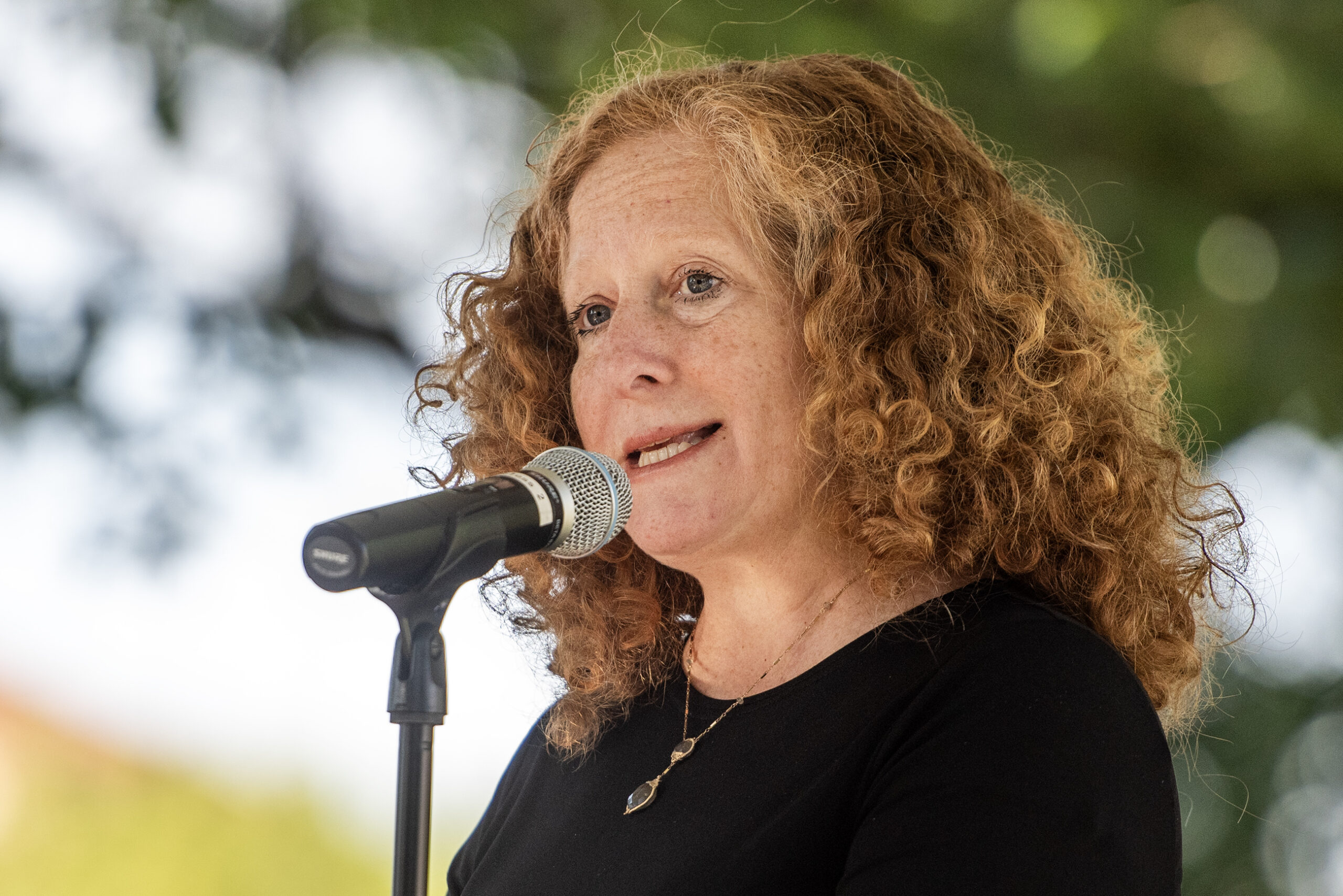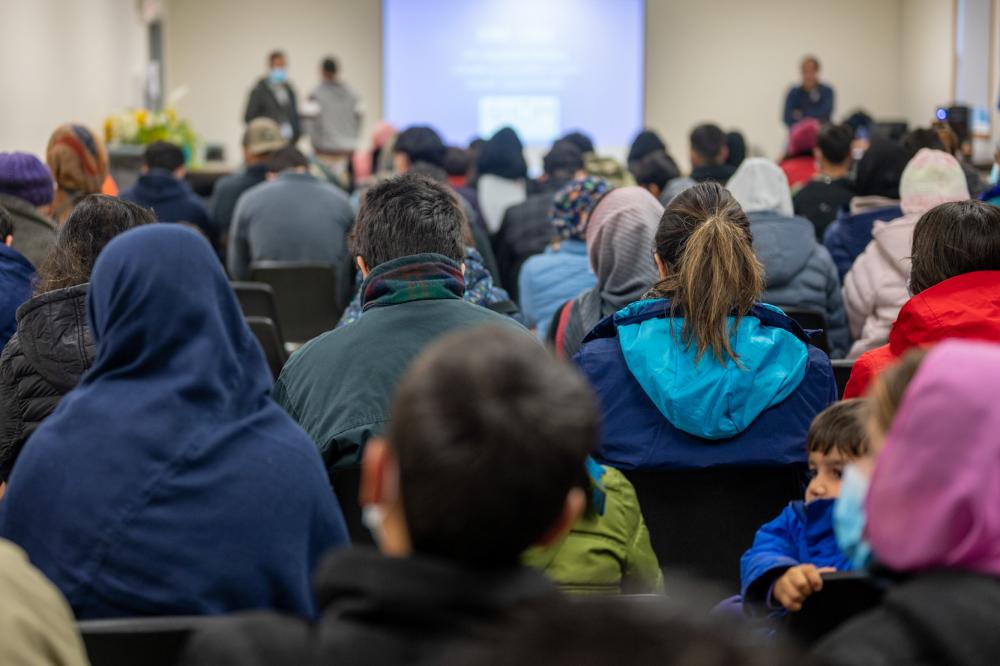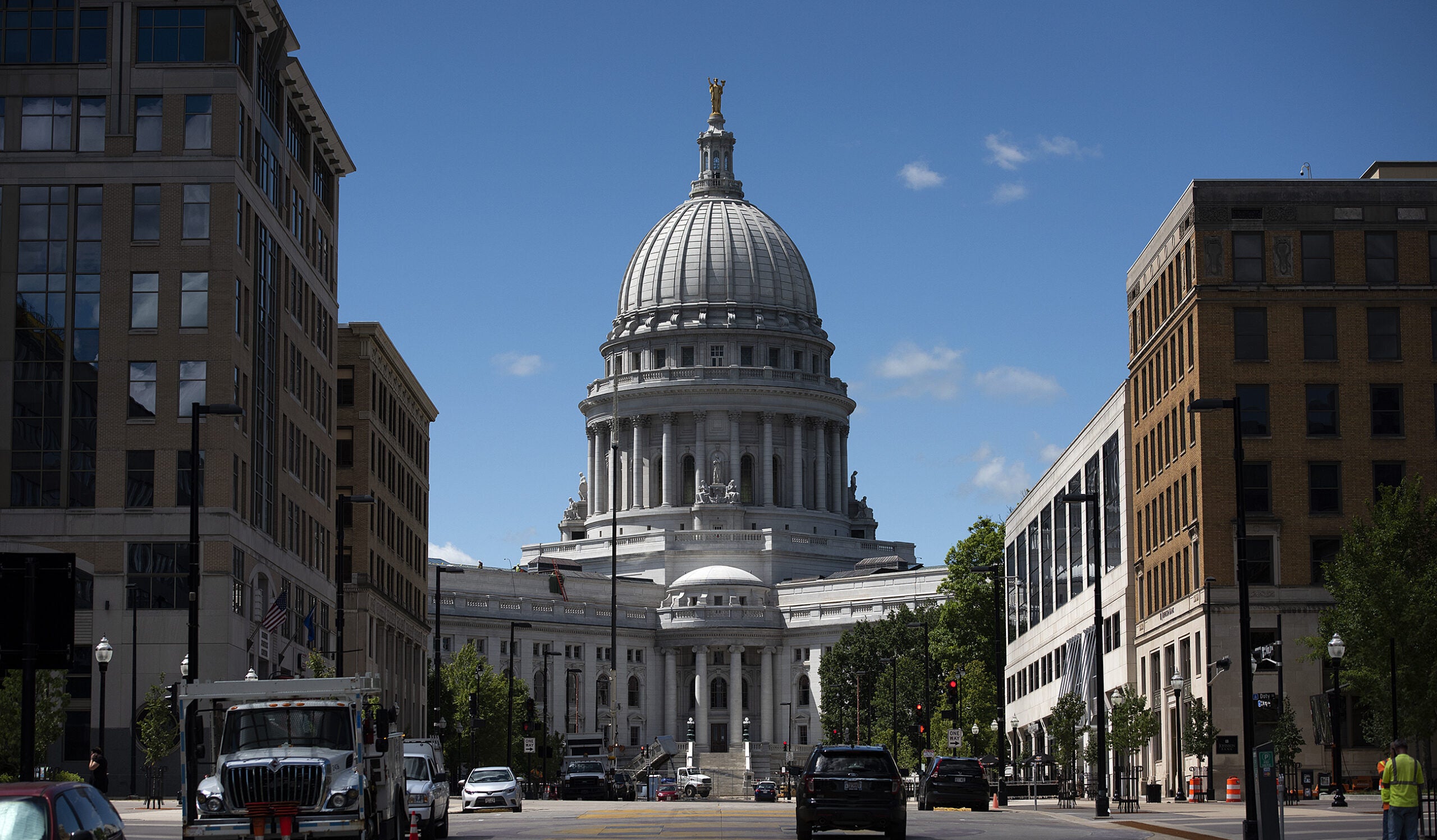A memorial on the University of Wisconsin-Stevens Point campus now marks the land as a gravesite for Native Americans buried there in 1863.
It’s the first time the campus has marked the site, and a “hard-won first step,” said Karen Ann Hoffman, who helped lead the effort.
By 1863, hundreds of Indigenous people of several tribes were living in a camp in what is now Stevens Point. The members of the group were essentially refugees displaced by American settlers.
Stay informed on the latest news
Sign up for WPR’s email newsletter.
“Their traditional homelands had been flooded by settlers,” Hoffman said. “‘Refugee’ is not too strong of a word for them — and to be a refugee in your own homeland is a very sad thing.”
As many as 100 Indigenous people died when the scarlet fever swept through the camp. About 30 years later, the university purchased the land where its campus is today.
The plaque installed last month on campus recognizes that history. It comes after years of work by Hoffman, Stevens Point anthropologist and researcher Ray Reser and others. In September, they led a community letter-writing campaign aimed at convincing the university to take action.
Hoffman, a member of the Oneida Nation and a nationally recognized beadwork artist, called the plaque a positive step, but not an endpoint. She wants to see a permanent sculpture on the site commissioned to a Native American artist, funded by the UW System as well as city and county governments.
The site has not previously been marked by the university, but it was locally known to be a gravesite as recently as the 1930s, when a local newspaper account described the discovery of human remains on the site. Reser began efforts to mark the site shortly after he learned about those accounts in 2016.
Archeologists have found evidence of Native Americans living in what is now Wisconsin dating back more than 10,000 years. By the 1800s, the Menominee were the most populous American Indian nation in the territory that would become Wisconsin, which was also home to the Ho-Chunk, Ojibwe, Potawatomi and others. Thousands were driven from the region as a result of forced treaties, and more were removed by the United States government following the 1832 Black Hawk War.
In a statement read as the plaque was unveiled, UW-Stevens Point Chancellor Bernie Patterson said the university is committed to establishing a permanent memorial on the site.
Wisconsin Public Radio, © Copyright 2024, Board of Regents of the University of Wisconsin System and Wisconsin Educational Communications Board.
